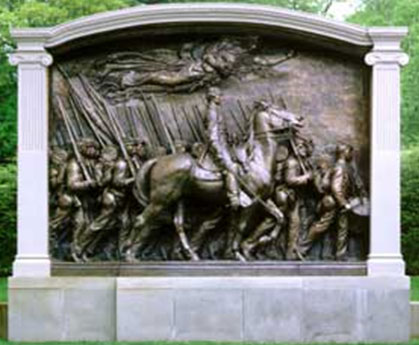
Visual art, such as paintings, sculptures, or photographs, has provided a glimpse into the eras in which the art represents.

Statues and sculptures are created to memorialize a person or event. These works of art can give viewers a detailed visual and physical depiction of a person or event. The sculpture pictured here is called the Shaw Memorial. According to the National Park Service, the monument depicts Colonel Robert Gould Shaw and the men of the 54th Regiment of Massachusetts. The men were African-American volunteers who fought in the Civil War. The memorial depicts them marching past the State House on their way to South Carolina; Shaw rides his horse, while the men march alongside him.
Paintings have traditionally been a source of expression for an artist's interpretation of issues and events. Early American paintings were used to capture images of individuals, places, and events because that was one of a few ways to communicate what was going on in the United States. Read more about some of the famous painters in U.S. history.
![]() Click on each of the paintings to learn more about the artists and their work.
Click on each of the paintings to learn more about the artists and their work.
Visual works of art commonly use photographic images. Photographers, like those described below, created photographic works of art that tell the history of a particular era through pictures of individuals and places. Click on each picture below and read about several of America’s most influential photographers in American history.
Sources for images used in this section, as they appear, from top to bottom: